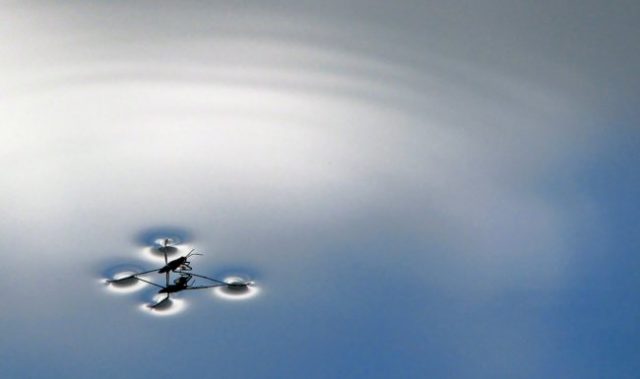
AsianScientist (May 20, 2016) – In 1940, the Tacoma Narrows Bridge collapsed in dramatic fashion, twisting in the wind before it snapped and plunged into the water below. As wind blew across the span, the flow induced oscillating sideways forces that helped bring down the bridge—just months after opening. This type of side-force oscillation can also damage antennae, towers and other structures.
Now, researchers from Seoul National University and Ajou University in South Korea have found that a structure with a twisted, helical shape and an elliptical cross section—inspired by the stem of a daffodil—can reduce drag and eliminate side-force fluctuations. The researchers describe their findings in Physics of Fluids.
Side forces come into play whenever wind flows across an elongated object, like when you stick your arm out the side of a moving car. As the air flows around your arm, it forms vortices that come off the top and bottom of your arm in an alternating fashion. This vortex shedding, as it’s called, imparts periodic forces on your arm.
“You will immediately feel that your arm will be forced to move up and down,” explained Professor Choi Haecheon of Seoul National University.
This phenomenon, called von Kármán vortex shedding, affects any elongated structure caught in wind or water currents such as lampposts, high rises and the long vertical pipes used for drilling oil at sea.
In the case of the Tacoma Narrows Bridge, the frequency of these periodic forces happened to hit its resonant frequency. This vortex shedding triggered the twisting mode of the bridge, causing it to collapse.
To find a way to reduce these forces, the researchers looked to nature for inspiration. Specifically, they studied the shape of a daffodil stem, whose twisting, lemon-shaped cross-section enables it to turn away from wind and protect its petals.
The researchers used computer simulations to explore the fluid dynamics around the daffodil stem’s shape: a helically twisted, elliptical cylinder.
They tested different variations—some with more elliptical cross-sections or with more twists, for example—in smooth, laminar airflow or a more turbulent wind. In both cases, the daffodil shape made a big difference.
“Some helically twisted cylinders annihilated the vortex shedding, resulting in drag reduction and zero side-force fluctuations,” Choi said.
Compared to a round cylinder, the daffodil shape reduced drag by 18 and 23 percent respectively for laminar and turbulent flows.
The unique geometry of the daffodil stem could be used to design more stable structures. Although such a shape probably doesn’t make sense for a bridge, it could work for things like antennae, lampposts, chimneys, underwater oil-drilling pipes, sky-scrapers and even golf clubs. In fact, Choi said, the researchers already have a patent for a helical golf club.
The article can be found at: Kim et al. (2016) Flow around a Helically Twisted Elliptic Cylinder.
———
Source: American Institute of Physics; Photo: dewet/Flickr/CC.
Disclaimer: This article does not necessarily reflect the views of AsianScientist or its staff.












